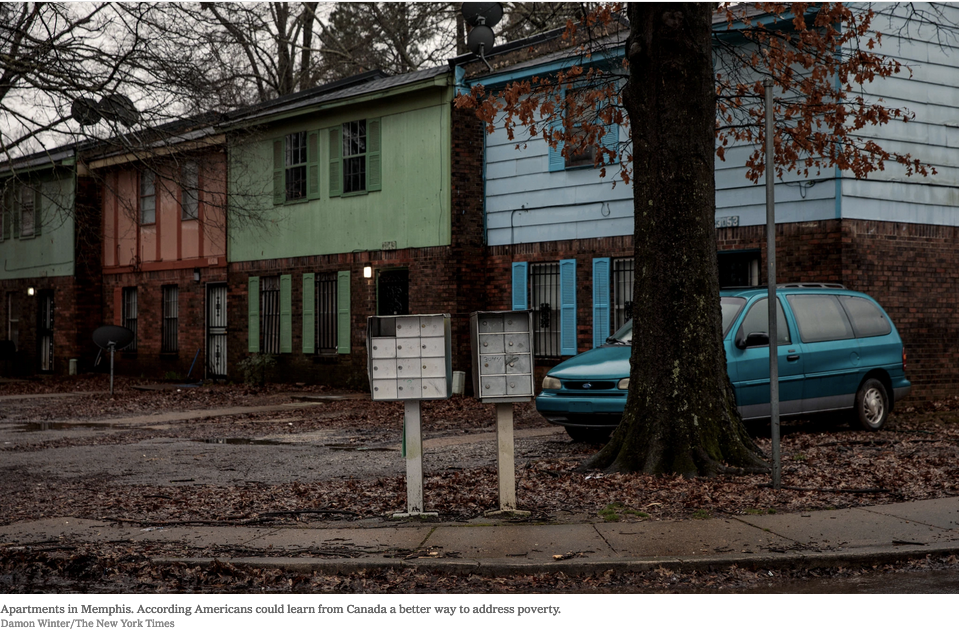According to recently released data, between 2015 and 2017, Canada reduced its official poverty rate by at least 20 percent. Roughly 825,000 Canadians were lifted out of poverty in those years, giving the country today its lowest poverty rate in history.
How did it do it?
The overall economy has been decent but not robust enough to explain these striking outcomes. Instead, one major factor is that Canadians have organized their communities differently. They adopted a specific methodology to fight poverty.
Before I describe this methodology, let’s pause to think about what it’s often like in American poor areas. Everything is fragmented. There are usually a bevy of public and private programs doing their own thing. In a town there may be four food pantries, which don’t really know one another well. The people working in these programs have their heads down, because it’s exhausting enough just to do their own work.
A common model is one-donor-funding-one-program. Different programs compete for funds. They justify their existence using randomized controlled experiments, in which researchers try to pinpoint one input that led to one positive output. The foundation heads, city officials and social entrepreneurs go to a bunch of conferences, but these conferences don’t have much to do with one another.
In other words, the Americans who talk about community don’t have a community of their own. Every day, they give away the power they could have if they did mutually reinforcing work together to change whole systems.
In Canada it’s not like that. About 15 years ago, a disparate group of Canadians realized that a problem as complex as poverty can be addressed only through a multisector comprehensive approach. They realized that poverty was not going to be reduced by some innovation — some cool, new program nobody thought of before. It was going to be addressed through better systems that were mutually supporting and able to enact change on a population level.
So they began building citywide and communitywide structures. They started 15 years ago with just six cities, but now they have 72 regional networks covering 344 towns.




